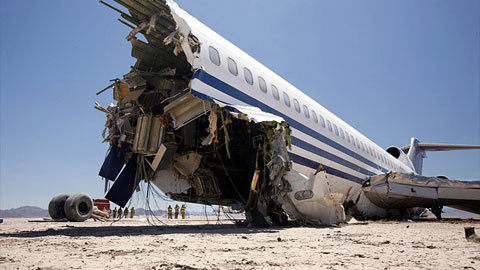正文
坠机测试:头等舱最危险 飞机尾部最安全
Beware first-class travellers! Passengers sitting in the rear of a plane have the best chance of survival in the event of a crash, an extraordinary and costly aviation experiment ever conducted has revealed.
In a unique aviation experiment recently, the 170-seat Boeing 727 was made to crash in a controlled manner in a remote part of Mexico's Sonoran Desert.
After pilot James Slocum parachuted out of the plane at 2,500ft, the jet was guided into the ground by a pilot in a following Cessna via a remote-control device, the reporters reported.
On board the jet were three sophisticated crash-test dummies designed to move like humans.

They were arranged in three positions: one in the classic brace and wearing a seat-belt; one belted but not in the brace position; and one neither belted nor in the brace.
After the jet hit the ground nose-first, experts found that the dummy in the brace position would have survived the impact, the one not in the brace would have suffered serious head injuries, and the dummy not wearing a seat-belt would have perished.
Using this, experts predicted that 78 percent of passengers on board would have survived the impact, but that coming down nose-first, all the first-class travellers would have died because the front of the fuselage sheared off.
Those sitting at the back would have had the best chance of survival.
The 1 million pound project, to be screened on Channel 4 next month, aimed to recreate a serious but survivable incident and allow scientists to study the crashworthiness of the aircraft's frame and cabin, as well as the impact on the human body.
It is also hoped that the findings may help increase the chances of passengers surviving such a crash in the future.
The Boeing was packed with dozens of cameras to record the impact from the inside. Footage was also collected on the ground, in chase planes, and even from the ejecting pilot's helmet.




 手机网站
手机网站